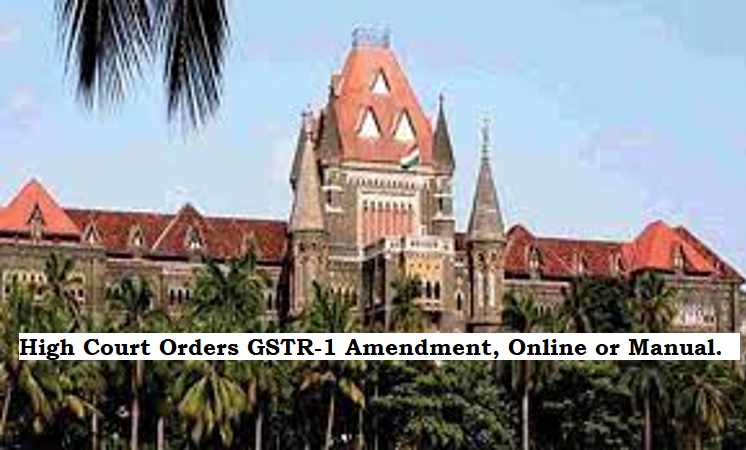


The Bombay High Court recently issued a directive to the tax department, urging them to facilitate the amendment or rectification of Form GSTR-1 for the months of July 2021, November 2021, and January 2022. This can be done either through online channels or manually. The court, presided over by Justice G. S. Kulkarni and Justice Jitendra Jain, emphasized the need for recognizing and allowing corrections for bona fide, inadvertent errors in GST returns, particularly when such errors do not result in any loss of revenue for the government.
The court highlighted the importance of a flexible approach by the tax department, acknowledging the intricacies of the joint play between taxpayers and the government. In cases where it is evident that there is no adverse impact on revenue collection, the court urged the department to adopt a more assesses-friendly stance. This, it argued, would not only reduce unwarranted litigation but also contribute to a more efficient and cooperative tax system.
The petitioner in this case is engaged in the design, development, manufacturing, and supply of electronic components for industrial purposes. The company is a regular supplier to Bajaj Auto Limited (BAL) and follows varying delivery terms specified in purchase orders from BAL. During the financial year 2021-2022, the petitioner delivered goods to several third-party vendors while generating invoices based on a "Bill-to-Ship-to-Model," in line with instructions from BAL. The petitioner correctly issued e-invoices and credit notes to BAL, citing its GST identification number (GSTIN). However, when filing Form GSTR-1 for the periods mentioned, the petitioner inadvertently reported the GSTIN of the third-party vendors instead of BAL's GSTIN.
The petitioner argued that it was arbitrary for the Deputy Commissioner of State Tax to reject their request for amending or rectifying Form GSTR-1, either through online means or manually. The department, on the other hand, contended that the GST Act itself does not permit the State Tax Officer to entertain such requests for amendment or rectification.
In examining the matter, the court delved into the provisions of sub-section (3) of Section 37, read in conjunction with Section 38 and sub-sections (9) and (10) of Section 39 of the GST Act. It emphasized the need for a purposive interpretation of these provisions to ensure that assessees are not unduly restricted from correcting or rectifying inadvertent errors in their GST returns.
The court rejected the argument that sub-section (3) of Section 37 should be construed as preventing the assessee from presenting the correct position and accurate particulars in their GST returns. It emphasized that there should be room for bona fide and inadvertent rectification or correction, particularly when it does not impact revenue adversely.
This decision by the Bombay High Court serves as a significant precedent, advocating for a balanced and pragmatic approach to GST-related matters. It underscores the importance of recognizing genuine mistakes made by taxpayers and allowing them the opportunity to rectify such errors without unnecessary bureaucratic hurdles. The court's call for an assessee-friendly system reflects a broader perspective on fostering cooperation between taxpayers and tax authorities, ultimately contributing to a smoother and more effective tax administration.
TAGS: Bombay High Court GSTR-1 Amendment Rectification Online and Manual Justice G. S. Kulkarni Justice Jitendra Jain Bona fide errors